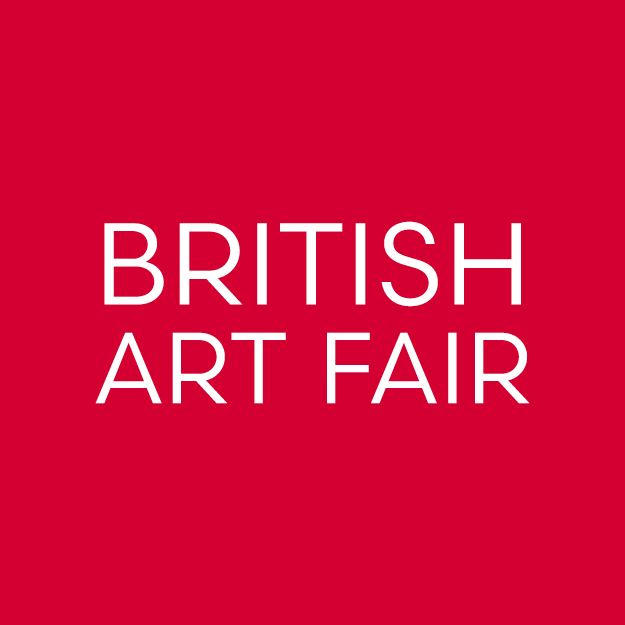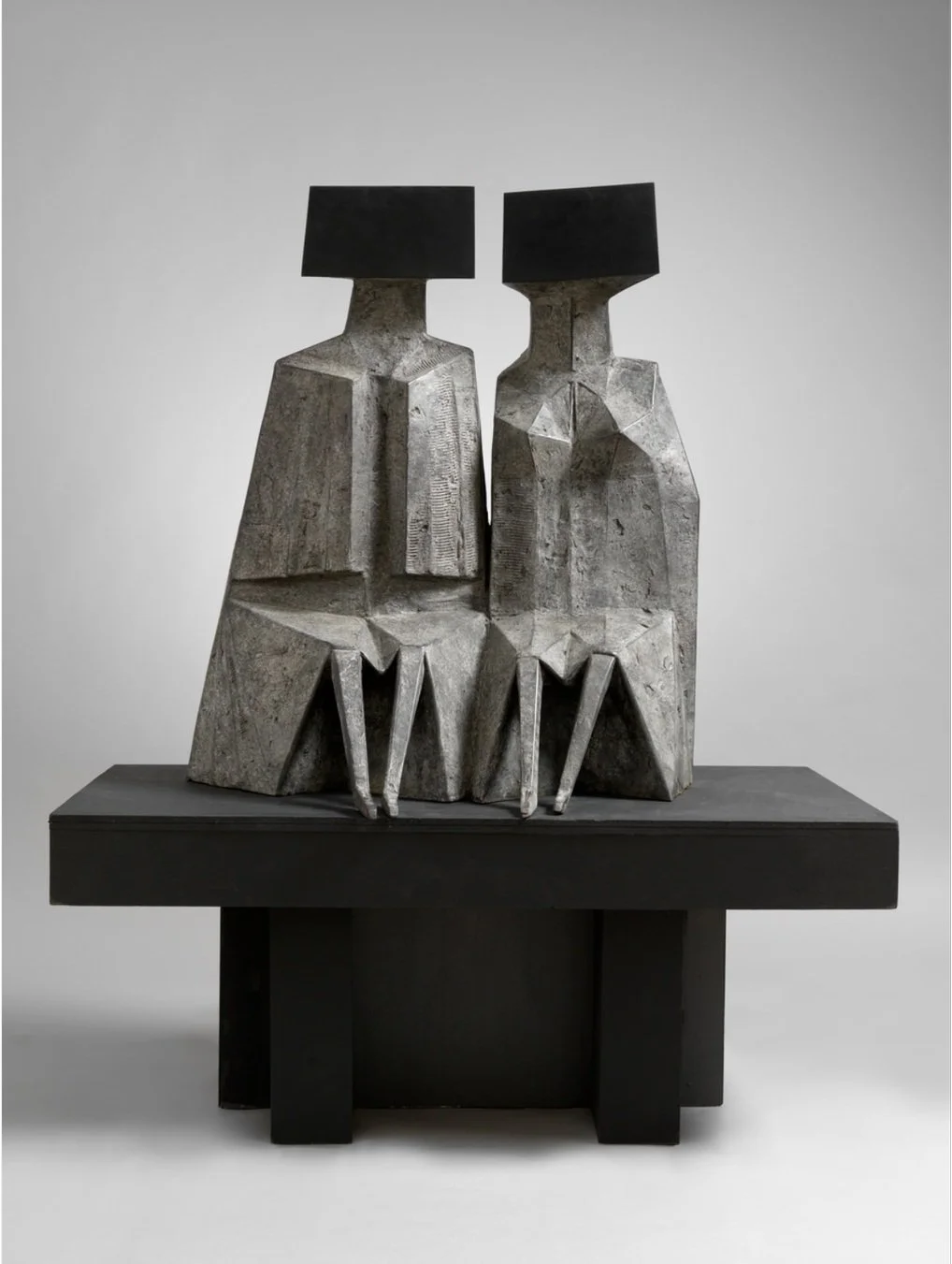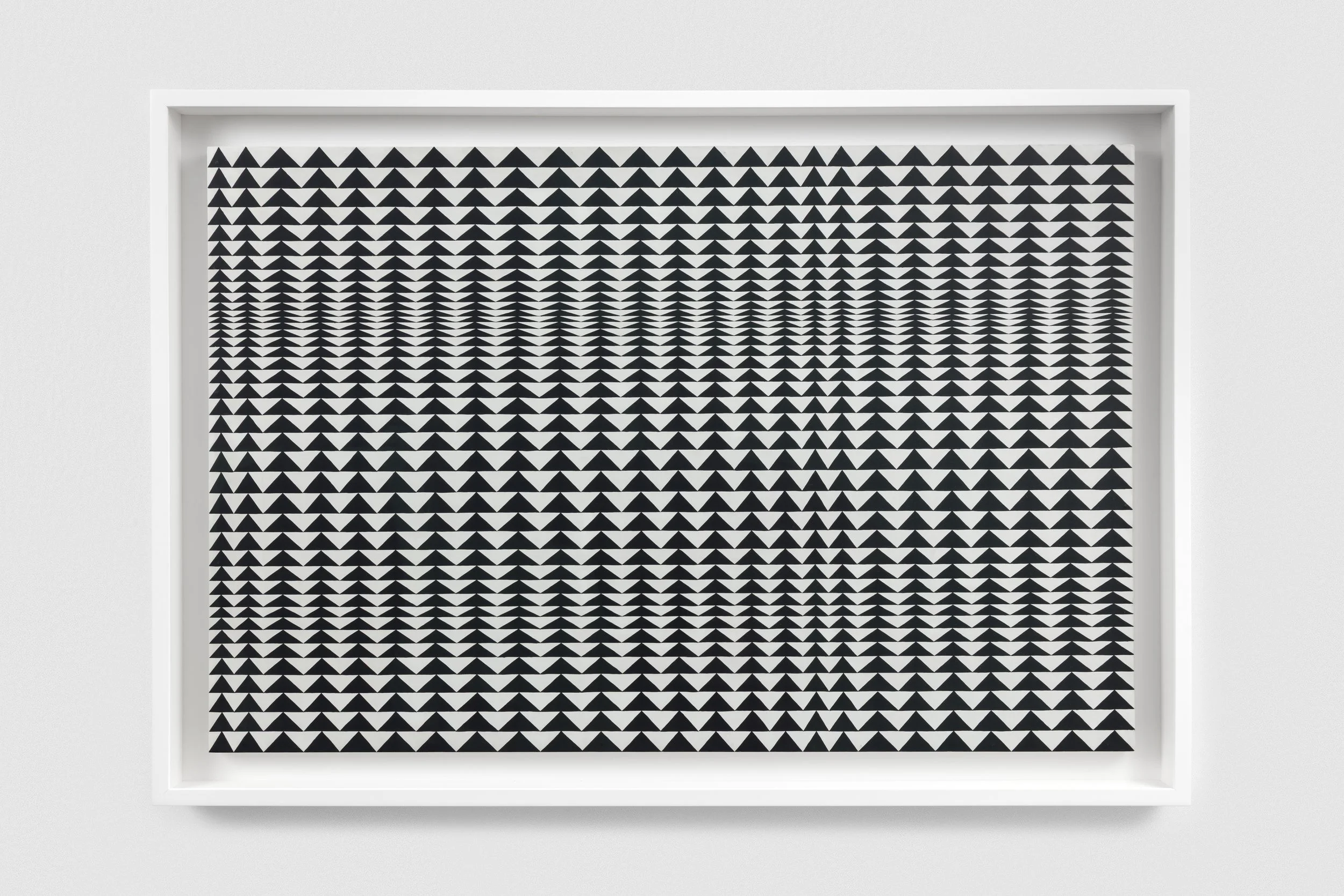BLAST #25 | British Art Thrives in New York Fairs
May 2025
Donald Trump’s tariff policy may have deterred the Chinese from bidding for American art at New York’s recent modern and contemporary art auctions, but it did not deter American buyers of British art at this month’s TEFAF fair in New York’s Park Avenue Armory, where London’s Osborne Samuel Gallery was flying the flag for the Brits (9-13 May). One American collector purchased a work on paper by Henry Moore titled Women Winding Wool (1948). The gallery also sold Ben Nicholson’s abstract 1940 (painting), a large Lynn Chadwick Sitting Figures, 1989, a Henry Moore Reclining Figure and a Bridget Riley work on paper - all for six and seven figure prices.
New York is a good place to find Modern British Art, comments Peter Osborne – “Things that were sold from the Rosenberg and Martha Jackson galleries in the 1950s and 1960s by the likes of Kenneth Armitage, Reg Butler, Bernard Meadows.”
Lynn Chadwick, Sitting Figures, 1989, Bronze, 96 × 82 × 74 cm. Edition of 9. Sold for a six figure sum by Osborne Samuel at TEFAF New York
In terms of prices, however, Osborne Samuel was outgunned by relative newcomer, London gallerist, Ben Hunter, who showed a 1963 Bridget Riley black and white op art painting, Reverse, with an asking price in excess of $7 million and sold it. The painting had been unsold at Christie’s in 2022 with a £3 million estimate but now topped the artist’s auction record of £4.4 million ($5.8 million).
Bridget Riley, Reverse, 1963 . Sold with an asking price in excess of $7 million. Image courtesy Ben Hunter, Photography: Jack Elliot Edwards.
It was a bit of a Riley week in New York with another British art dealer, Hazlitt Holland-Hibbert taking space to show and sell early works on paper on the occasion of the 60th anniversary of her solo show at MoMA in New York which established a firm following for her in America. Holland-Hibbert sold several of these works in the $250,000 range. They also issued a reminder that Howard Hodgkin had not been given a decent airing in New York since a show at Gagosian in 2016, with an impressive display at TEFAF from which they sold Knitting Pattern (2015-2016) with an asking price of $395,000 and Living Room (1999-2006) with an asking price of $925,000.
Contemporary Scottish figurative art went down a storm at New York’s fashionable Independent Art Fair, held in Soho’s Spring Studios, 8-11 May. Here, the Ryan Lee gallery, based on West 26th Street, presented a solo booth of Fauvist inspired landscapes by fifty-year-old Tim Braden and sold twelve of them for between $6,000 and $28,000 each. “Braden’s paintings looked great when sun-drenched by light pouring in at Independent”, said gallery co-founder, Jeffrey Lee. Next show for Braden is in a mixed exhibition at the Frestonian gallery in London in June.
London gallery The Approach also met with some enthusiasm for John Maclean, a filmmaker and musician who turned to painting during the pandemic for something to do. Not to be confused with the late Scottish abstract painter, John McLean, Maclean sources his imagery from salvaged, hand-tinted postcards or printouts from the internet and counts artist Cindy Sherman amongst his fans. At the fair, The Approach sold nine of his small-scale paintings in the $11,000 to $13,500 range.
Another British artist in demand at Independent was thirty-year-old painter of atmospheric abstracts, Lewis Brander, who enjoyed a sell out on a stand held jointly by James Cope Gallery (Dallas) and Vardaxoglou Gallery (London). The works sold were in the $10,000 to $13,000 price range.
Tim Braden, Mountain Lake (Warm), 2024. Image courtesy of James Cope (Dallas) and Vardaxoglou Gallery (London)
Gallery News
As from 23 June Osborne Samuel will be moving from Dering Street, where their lease is coming to an end, to the former Mayor Gallery space on the first floor at 21 Cork Street above Flowers. In the catalogue to the opening exhibition of Modern British Art, co-founder, Peter Osborne, celebrates forty years in the art business and announces plans for the future which include a homage to Jim Ede, the founder of Kettle’s Yard, in October. Also in the catalogue is a short memoir by the other co-founder, Gordon Samuel, who recounts how a chance encounter with the son of the artist, Cyril Power, led him, and the gallery, to becoming the leading dealers in the Grosvenor School of printmakers.
On 29 April a new gallery, delightfully named Old and Interesting Art, opened on the first floor of 40 Great Russell Street opposite the British Museum. Its proprietor, Isaac Benigson, is one of the youngest gallerists to launch in London in recent times. Born in 2001, Benigson studied art curation at Central St Martin’s and will focus, he says, on artists with a radical vision and artists that have been historically overlooked.
Andrew Vester, Fragile Pradise 17 (study), 1990. Image courtesy of Isaac Benigson
His first show is for South African born Andrew Vester (1937-2020), who studied in London falling under the influence of the Euston Road School then blossoming into a more exotic colourist back in South Africa, at times reminiscent of Gauguin, as in his Fragile Paradise series, and making Hockneysque drawings, such as his Untitled (man in a shower), 1980. Benigson’s first visitor was the Director of the British Museum, Nicholas Cullinan – a good omen – followed by the former director of the Moderna Museet in Stockholm, Daniel Birnbaum.
Several sales were made at the opening with prices ranging from £850 for an etching to £12,500 for a large painting. Benigson is now planning a show in September for the Polish born British artist, illustrator and designer Franciszka Themerson (1907 – 1988), who has also been slightly overlooked. However, the tide of recognition may have already turned. Themerson’s auction prices burst into the five-figure range in 2019 and have since risen to £75,000. In 2022, she was included in the Barbican’s exhibition Postwar Modern: New Art in Britain 1945- 1965. This year already she has been celebrated with Walking Backwards, a display at Tate Britain, and her early work has been the subject of an exhibition at the Ben Uri Gallery and Museum (until 23 May).
Wilhelmina Barns-Graham, Celebration at 90, 2000, Screenprint, Edition of 70, 58 x 76 cm. Courtesy Wilhelmina Barns-Graham Trust
One visitor to last year’s British Art Fair was Paul Hedge, the owner of contemporary art gallery Hales (London and New York) who took special interest in the top floor display of work by Wilhelmina Barns-Graham. This was interesting as Hales is a contemporary gallery and no artist or estate it has worked with was born before 1934 (John Hoyland). Barns-Graham was born in 1912, and as such fits firmly in the modern as opposed to contemporary category. Or does she? This month Hales announced that they would henceforward be working with the Barns-Graham estate. Perhaps they will find more contemporary relevance in her work than has been accorded hitherto, much as Gagosian did with the estate of Alberto Giacometti, opening up fresh regions of collector interest.
Auctions
Reports on Cambridge auctioneer Sworders Modern and Contemporary Art auction on 15 April headlined the sales of a Terence Cuneo painting of Field Marshal Montgomery overseeing the unconditional surrender of Germany that ended the Second World War. Perhaps triggered by the imminence of VE day it made the top price of the sale, selling for £60,000 against a £15,000-20,000 estimate.
But it would be naïve to pretend the art market is not having to adjust to the adverse socio-economic conditions the world is in. Less trumpeted at the auction was a collection of about 67 Modern British works by notable artists (Ben Nicholson, Peter Lanyon, Roger Hilton, William Scott) that were being sold by a former art dealer who did want to be named and met with mixed results when 20 of them went unsold. Perhaps this was due to the more limited appeal of works on paper, the uncharacteristic nature of some of the examples that would appeal more to the connoisseur than the average buyer, or the sale location. But more likely it was the feel that this was a bit of a clear out.
Of four feint looking drawings by Ben Nicholson, only one sold. Of the eleven works by Lanyon only three were sold, though it has to be said that his unusual assemblages of driftwood and found objects estimated at over £20,000 have never found a ready market at auction. The top lot was supposed to have been an unwieldy 10-metre-long gouache sketch for a mural commissioned from Lanyon by US collector Stanley Seeger, Porthleven, 1962, estimated at £120,000, but there were no takers.
On the plus side, most of the 39 paintings and drawings by Roger Hilton sold, if below estimates, and six out of ten abstract works on paper by William Scott, some of which an expert said were atypical, found buyers.
Two of these had been bought from London dealers Archeus. Although not acknowledged in the catalogue, Archeus had acquired the spare, unsigned, minimal drawings, almost like outlines for an arial street map, at Phillips in 2001 where they were part of two sketchbooks by Scott. Estimated at £15,000 the sketchbooks hammered down for £42,000 to Archeus who said they offered them to the Tate but were turned down. Then, controversially, they broke up the sketchbooks and sold the thirty odd drawings separately, two of which appeared at Sworders where they were estimated at £1,000 each. One sold on a £1,000 bid, the other on an after sale offer of £650 having had no bids in the auction. Faring better over time were two 1950s compositions by Scott in muted tones of grey, black, white and umber which sold for several times more than they had cost twenty five years earlier, while a more colourful 1960 gouache Composition (I ) hit a mid-estimate £4,500, pretty much what it cost in 1997 when it had been estimated at just £700 - note the estimate had increased sixfold.
William Scott RA (1913-1989), Composition (I), 1960, signed and dated 'W. SCOTT 60' l.r., mixed media, 24.5 x 31cm, unframed. Courtesy Sworders
Books
William Johnstone: Abstract Expressionist. Paintings 1923-1980. By Keith Chapman. Styca Publications 2025
Art dealer Keith Chapman is best known for his expertise and marketing of modern British sculpture but maintains a strong interest in paintings. Now his enthusiasm for the work of William Johnstone, the Scottish artist who dripped before Jackson Pollock, is out in the open with the publication of William Johnstone: Abstract Expressionist. Paintings 1923-1980, with a ten-page essay by the art historian Dr Justine Hopkins and 77 colour illustrations, some of which are works to be found for sale on Chapman’s Modern Sculpture website.
A long-time exhibitor at the British Art Fair, Chapman now works primarily by appointment from his base in Scarborough or through the internet (keithchapman@talk21.com)
John Banting and his Circle. By Joanna Ward. Austin Macauley Publishers 2025
“One of the great eccentrics of British surrealism“ (Desmond Morris), John Banting (1902-1972) was the archetypal outsider artist with connections. But as the British Surrealist movement ebbed after the war, he ended his days in squalor in Hastings, largely forgotten. The subject of only a handful solo exhibitions since his death, Joanna Ward’s book appears to be the first in depth biography of the artist, drawing extensively from his archive in the Tate. It is strong on detail arranged into a neat, easily dipped into chronology from the Bruno Hat Hoax (1929) to Humphrey Spender, Nancy Cunard and the Hamet Gallery which gave him his last show (1971). It addresses his flashes of brilliance without attempting to turn him into a greater artist than he was.
British Blonde: Women, Desire and the Image in Post-war Britain by Lynda Nead. Published by Paul Mellon Centre for British Art: 9 September 2025
After all the exhibitions and auction records, do we really need a book on British blondes to further the cause of the late Pauline Boty, the young British pop artist who died aged 28 and whose work was not discovered until 27 years later in a barn? This book by Lynda Nead, a Visiting Professor of The History of Art at the Courtauld Institute of Art, is a vivid account of Post-war Britain explored through the image of the British Blonde, as opposed to the better-known American version – i.e. Diana Dors v Marilyn Monroe.
Following in Dors’s wake are Ruth Ellis, the last woman to be hanged in Britain; the actor Barbara Windsor; and Boty, the Pop artist. Much as Francis Bacon’s life was glamourised by his association with the underworld, Boty here gets the press blurb treatment with ‘a cast of social types, the dramatis personae of British Blonde: criminals and thugs; demobbed airmen; hostesses and models.’






